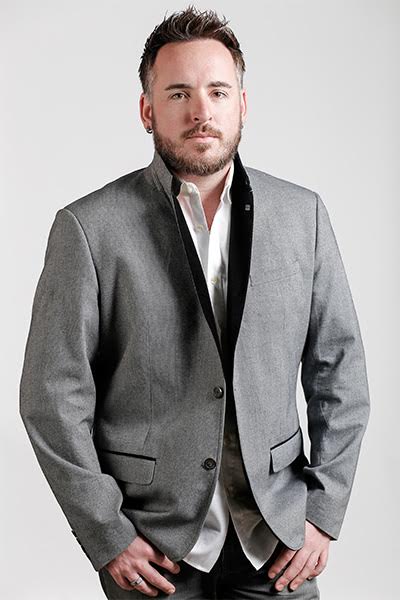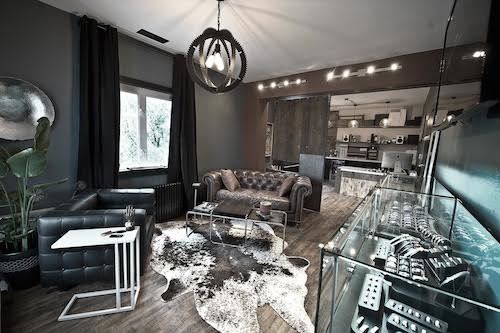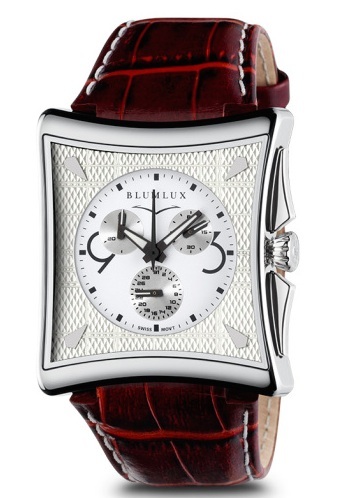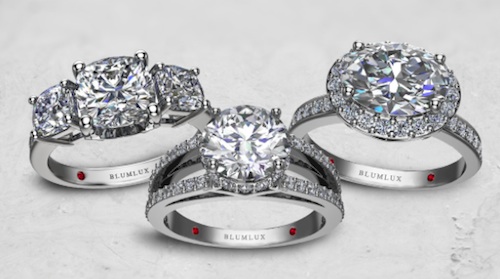Articles and News
Where Is The Luxury Jewelry Market Going And Where Do You Fit In? Part III: Winning The Millennials | August 19, 2015 (0 comments)

Merrick, NY— Millennials, the massive cohort of consumers born between 1980 and 2000, are keeping the jewelry industry up at night. Everything jewelers have learned and relied on to sell jewelry isn’t resonating with these consumers.
In The Centurion’s ongoing series “Where Is The Luxury Jewelry Market Going And Where Do You Fit In?” no discussion of the future would be complete without the Millennials.
Millennial influence in the luxury market has begun, but will increase significantly around 2018 to 2020, and seriously impact the market in 2026-2029, the peak years to capture that demographic, says Pamela Danziger, president of luxury research firm Unity Marketing, Stevens, PA. Affluence typically comes with middle age, and the leading edge of Millennials—turning 35 this year—is just now entering it. Younger middle-age consumers (ages 35-44) spend between one and a half to two times as much on high-end/luxury goods and services as older middle-age consumers (45-54), according to Unity’s research. And appetite begets appetite: the more they experience luxury as they grow into affluence, the more they will want luxury goods, says Unity.
That’s the good news.
But when even the daughter of a diamond dealer says, “…as a single woman in her mid-20s in 2015, what do I need fine jewelry for?” this industry has to do some very fast retooling if it’s to remain relevant.
The 25-year-old in question is Beejoli Shah, who explores the issue in depth in this article in Pacific Standard magazine.
“I understand fine jewelry’s appeal. There are pieces in my mother’s collection I’d go to the mat with my sister over. And I’d be lying if I said I didn’t want someone to peer at my future engagement ring and make that clichéd joke, “You can’t even see where the Titanic hit it!” But with rapidly innovating technology bringing out shiny new gadgets in droves to spend my money on (or have gifted to me!), buying something that can’t be upgraded to the latest model down the road seems foolish. Those diamond earrings are a classic, sure, but a future purchase may not hold up in the trend department in the same way. An eternity band isn’t like an iPhone—there’s no trade-in plan after every two years.”
Shah says her peers expect, and even value, impermanence. And jeweler Nick Blum, owner of Blumlux Boutique in Indianapolis, IN, confirms that’s absolutely true. He gets Millennials through and through—because he is one. He’ll turn 30 in a few weeks.
“Fine jewelry does serve a place [with Millennials], especially bridal and watches. Heritage and tradition are very important, which is why Millennials will spend a lot of money on bridal. But otherwise, only a finite number will go into a fine jewelry store for, say, a bracelet, just because they want to wear it. Everyone else won’t, because it’ll be out of style or they’ll want to upgrade it or they’ll lose it or they’ll get tired of it,” he told The Centurion.

Nick Blum
Renting suits the short Millennial attention span. Sites like Rent The Runway and Bag, Borrow, or Steal allow a taste of luxury without the financial commitment, and fine jewelry sites like HauteVault and Adorn.com are getting in on the action. And Bloomberg.com reports Millennials have high interest in leasing luxury cars like Cadillac, Jaguar, and Lexus, as well as the Mercedes C-Class. By leasing, they get the benefit of a new car with the latest bells and whistles every few years—just like a cell phone—and lower monthly payments than buying.
Still, Millennials have the same emotions as humans always have. While they may be more likely than previous generations to delay—or even eschew—traditional marriage, they still have a need to express love and emotion. Shah says those that are getting married still want a diamond engagement ring, and a big one.
De Beers’ CEO Philippe Mellier believes there’s room in Millennials’ minds for both fleeting and forever, hence the decision to bring back the legendary tagline “A Diamond Is Forever” for its Forevermark brand marketing starting this fall.
But is it too late? Shah even says, “A diamond may be forever, but in a generation that values impermanence, the one-time slogan of the century is looking more and more like an outdated mantra.”
Blum says, “It’s not like we are not getting married or not buying jewelry, we’re just finding different ways to buy it. The traditional jeweler doesn’t speak well to our generation. And just like they were slow to adopt the e-commerce trend, they are also slow to address the purchasing habits and expectations of the Millennial consumer.”
To assume that Millennials will respond the same way to the same brands and the same marketing as older generations is ridiculous, says Danziger. They will be as different from their Boomer parents as those Boomers were from the Depression/World War II-era, and luxury marketers need to adjust.
Danziger cites the Saint Laurent Paris brand under the leadership of designer Hedi Slimane as an example of the successful transition from old to new luxury. When Slimane—a Gen X’er—took the helm of the storied fashion house Yves St. Laurent, he moved his design studio from Paris to Los Angeles, adopted a minimalist aesthetic, and shortened the brand name to Saint Laurent Paris. He infused it with a modern—some would say American—sensibility, yet by adding “Paris” to the logo, he kept the connection to the brand’s history. Not only did he rocket the brand to success, but his skinny suits drove a shift in style for menswear, period.
Jewelers really need to adjust, stresses Blum. “The traditional jewelry-buying experience is a turnoff to Millennials. I know because they tell me when they come into my store. Traditional stores are stuffy, there’s lots of pressure, the salesman is behind the counter wearing a better suit than they can afford, everything’s locked up, and it’s a real intimidating, hands-off experience.”
By contrast, his store—which is by appointment only—is an open, relaxed atmosphere where customers come to hang out and have a drink and a cigar (if they’re of age) and just be. Even older customers like the atmosphere, he says.

Interior of Blumlux Boutique in Indianapolis, IN.
“They don’t always buy. Eventually they do, but not always.” When they do want to buy, he pulls merchandise out of a safe or out of the one showcase in the store, and brings it over to them on the couch. And his merchandise is limited to what Millennials actually do want to buy—bridal and watches.

Blumlux Boutique sells only private-label watches, above, and bridal jewelry, below. The bridal jewelry incorporates a signature ruby inside the shank. The watch is a Prince Quattro model; the bridal rings are from the Vena Collection.

His business started online and his first shop opened to serve his private clients. Now he’s taking the Blumlux experience bigger. He just bought a four-story building in downtown Indianapolis that he plans to convert to a multi-use building with lofts for living and a brand-new Blumlux store. The new store will be a mix of walk-in and appointment business: the front section will feature a collection of lower-priced jewelry, now in development, that customers can just walk in and touch and try and shop. The higher-end goods will be in the back and will require buzzer admission. Blum will have his own workshop on-site so customers can see the jewelry being made. WIth its industrial, urban setting, the new building (shown top of page) is a departure from what most traditional luxury jewelry stores look like. Blum wants it that way, and Danziger's research, among others, supports his choice.
The word “luxury” is lost in translation to Millennials, says Blum. They see the luxury in the story, not in the label, and it has to be made relevant to them. “It’s all about selling the story and the experience,” he says. Millennials crave the story. They want to see the piece being made and know the story behind it—also in terms of its social responsibility—and that story has to be authentic, not just something a brand made up to sell more goods.
“I just bought a house recently, and where my parents and my older sister would go into a store and buy furniture for a house, all my furniture is from a local guy who makes it.”
Busting The Millennial Myths—Or Not
There are many popular stereotypes about Millennials. Which are really true, and which are overblown?
1. Millennials are up to their ears in student loan debt, and more inclined to save than their freespending Boomer parents.
True. While no stereotype is universal, they do exist for a reason. Student debt is a huge obstacle for many Millennials and has reshaped the financial experience from their Boomer parents. They are more concerned with paying off debt and saving than the Boomers who launched their careers in the Eighties, with its “he who dies with the most toys wins” mentality. But it also might not be the worst thing—as this Forbes article points out, Millennials that return to the parental nest after college are in much better financial shape when they do leave it.
2. Millennials don’t want to pay full price for anything and pride themselves on always being able to find a deal.
False. Jeweler Nick Blum says Millennials absolutely will pay full price for premium goods—as long as it has personal value to them. It has to be unique, good quality, and have a story. Locally produced is a huge incentive as well. But for big brands they can’t always afford, Millennials do love a bargain. Nordstrom is a luxury retailer that gets it: last year, Forbes magazine cited it as an example of the future of retailing. Nordstrom’s principals caught on early that online shopping and off-price luxury is going to matter a great deal, and indeed the company’s solid growth is being driven by its Nordstrom Rack off-price division and its online divisions: nordstrom.com, HauteLook.com, and nordstromrack.com. Blum says he finds Millennials willing to buy second-hand for brands they desire but are out of reach.
3. Millennials would far rather spend their money on experiences than stuff.
True. Blum says the whole bling thing is passé and often wearing too many diamonds is a social stigma. “People say ‘oh, you think you’re better than us?’ I used to sell lots of diamonds for men; now I don’t.” They prefer unique design in “raw” materials that aren’t necessarily precious, he says. And being part of a collective, to have experiences and show where you are and what you’re doing is a status symbol, not what you have, he adds.
4. Millennials are socially conscious and worry about conflict diamonds, dirty gold, etc.
True. “They always ask questions,” says Blum. Maybe not specifically about conflict diamonds or dirty gold, but they always want to know the story of the piece and that it’s a good story behind it.
Missed the first two installments of our "Where Is Luxury Going" series? Click here and here to read.







